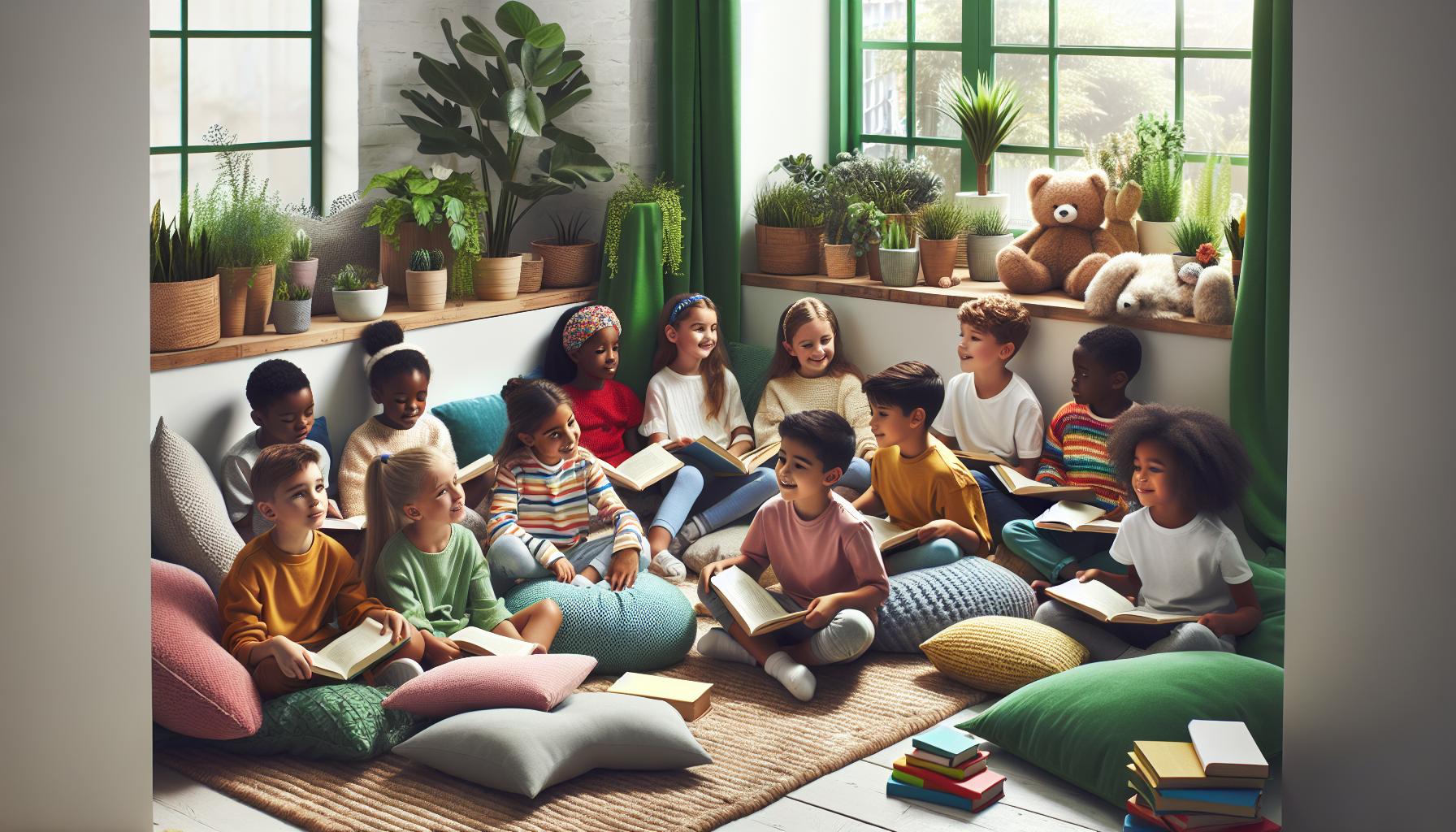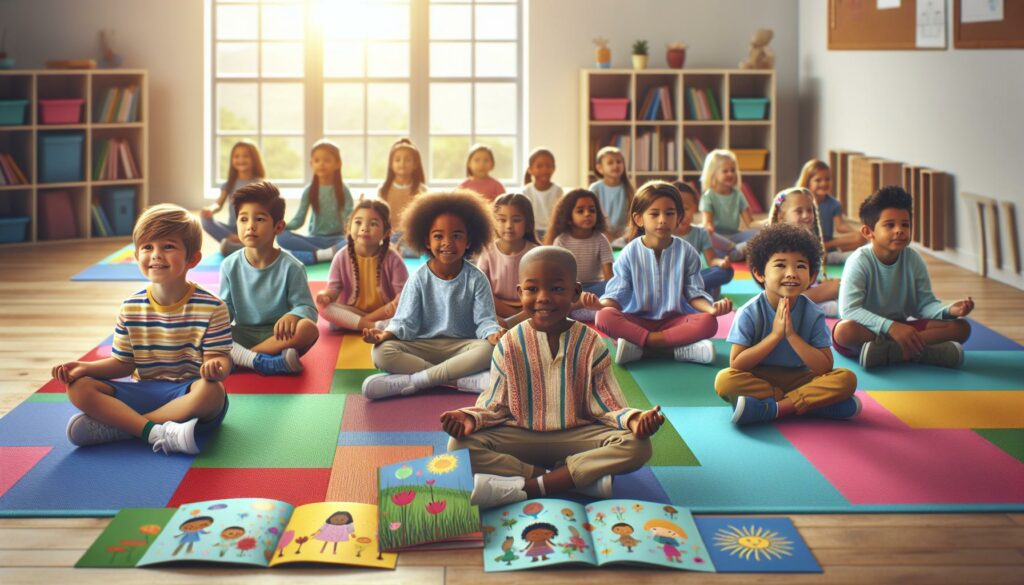In today’s fast-paced world, teaching kids mindfulness can be a game changer. It helps them manage stress, improve focus, and develop emotional resilience. But how do we introduce such an important concept to young minds? That’s where mindfulness books for kids come in. These books offer engaging stories and practical exercises that make learning about mindfulness fun and accessible.
I’ve explored a variety of titles that not only captivate children’s imaginations but also provide valuable tools for navigating their feelings. Whether it’s through enchanting illustrations or relatable characters, these books can spark meaningful conversations and foster a sense of calm. Join me as we dive into some of the best mindfulness books that can empower the next generation to embrace the present moment.
Key Takeaways
- Mindfulness Benefits: Teaching kids mindfulness improves their stress management, focus, emotional resilience, and empathy, enhancing their overall development.
- Engaging Books: Mindfulness books for kids, such as “The Kindness Book” and “Mindful Monkey, Happy Panda,” provide accessible lessons through captivating stories and relatable characters.
- Emotional Awareness: Reading mindfulness books helps children recognize and articulate their emotions, leading to healthier emotional responses and stronger coping mechanisms.
- Consistency in Practice: Establishing a routine for mindfulness activities and modeling these practices in everyday life reinforces learning and helps children develop lasting habits.
- Parental Involvement: Parents play a crucial role in introducing mindfulness by using stories, encouraging self-expression, and integrating fun activities into their child’s routine.
Mindfulness Books For Kids
Mindfulness plays a crucial role in children’s development. It enhances their ability to manage stress by promoting calmness and clarity in challenging situations. Mindfulness practices, such as meditation and breathing exercises, help kids focus on the present moment, reducing anxiety and improving emotional regulation.
Mindfulness nurtures better attention spans. Kids who engage in mindfulness show improved concentration, enabling them to absorb information more effectively in school. This focus translates into greater academic success and a positive learning environment.
Mindfulness cultivates resilience. By understanding their emotions and reactions, children develop stronger coping mechanisms. This resilience empowers them to face challenges with confidence and adaptability, essential skills for navigating life’s ups and downs.
Mindfulness fosters empathy. As kids learn to observe their feelings and thoughts, they become more attuned to the emotions of others. This heightened awareness nurtures kinder interactions, improving relationships with peers and family.
Mindfulness contributes to overall well-being. Embracing mindfulness practices can enhance emotional intelligence, leading to better communication and social skills. A strong foundation in mindfulness equips kids with tools for a balanced and fulfilling life.
Top Mindfulness Books For Kids

I’ve compiled a list of exceptional mindfulness books that engage children while teaching valuable emotional skills. These titles blend captivating storytelling with practical tools for mindfulness.
Book 1: The Kindness Book by Patricia Hegarty
The Kindness Book encourages children to practice kindness as a pathway to mindfulness. This brightly illustrated book explores how simple acts of kindness can strengthen relationships and create a positive atmosphere. Through relatable situations, kids learn the importance of compassion and empathy, fostering a mindful approach to their interactions with others.
Book 2: Mindful Monkey, Happy Panda by Lauren Alderfer
In Mindful Monkey, Happy Panda, children discover mindfulness through the characters of Monkey and Panda. This narrative highlights the significance of focusing on the present moment. Through playful dialogue and engaging illustrations, kids explore breathing techniques and meditation exercises that promote calmness and self-awareness, making mindfulness an enjoyable experience.
Book 3: A Handful of Quiet: Happiness in Four Pebbles by Thich Nhat Hanh
A Handful of Quiet introduces mindfulness practices through the concept of four pebbles. Each pebble represents a different quality, such as gratitude and love. Thich Nhat Hanh guides children in using these pebbles to cultivate mindfulness and enhance emotional awareness. The book features gentle exercises, turning mindfulness into an interactive and enriching journey for young readers.
Benefits Of Reading Mindfulness Books

Reading mindfulness books offers numerous benefits for children. These books help children develop emotional awareness. By learning to recognize their feelings, kids gain insight into their emotional states, fostering healthier responses.
Mindfulness books enhance focus and attention. Engaging narratives and exercises guide young readers in practicing concentration, which translates into improved academic performance.
Mindfulness books promote relaxation. Through calming illustrations and soothing language, these stories create a tranquil environment, allowing children to unwind and alleviate stress.
Reading these books cultivates resilience. Children learn valuable coping strategies for encountering challenges. This empowerment builds confidence, helping them adapt to new or difficult situations.
Mindfulness books foster empathy. By exploring characters’ experiences, children become attuned to different perspectives, enhancing their social skills and strengthening relationships with peers.
Mindfulness books encourage self-reflection. As children engage with characters and scenarios, they explore their thoughts and feelings, leading to greater self-understanding.
Reading mindfulness books helps instill a lifelong practice of mindfulness. By introducing these concepts early, children can carry these skills into adulthood, benefiting their overall mental health and well-being.
Tips For Parents On Introducing Mindfulness

Introducing mindfulness to children involves thoughtful engagement and consistent practice. Here are key strategies to help parents effectively integrate mindfulness into their family routine:
- Model Mindfulness: Demonstrating mindfulness in everyday activities encourages children to observe and learn. Practice breathing exercises or mindful eating during meals to showcase the benefits of being present.
- Start Small: Initiate mindfulness practices with short sessions. Begin with 5-minute breathing exercises or brief moments of silence. Gradually increase the duration as children become more comfortable with the practice.
- Use Stories: Incorporate mindfulness books, such as “Mindful Monkey, Happy Panda” or “The Kindness Book.” Reading engaging stories promotes understanding of mindfulness concepts and provides relatable examples for discussions.
- Create a Routine: Establish a regular schedule for mindfulness activities, such as morning meditation or evening reflections. Consistency reinforces practice and helps children develop a habit of mindfulness.
- Encourage Expression: Allow children to express their feelings and thoughts freely. Discuss emotions observed in mindfulness books or personal experiences, fostering a safe space for emotional awareness.
- Make It Fun: Use playful techniques like mindful games or nature walks. Engaging in activities that require observation and presence can make mindfulness enjoyable and relatable for kids.
- Focus on Breathing: Teach children simple breathing techniques. Use phrases like “breathe in calm, breathe out stress” to help them understand the calming effects of breath.
- Practice Gratitude: Incorporate gratitude exercises into daily routines. Encouraging children to express what they are thankful for nurtures positive emotions and reinforces mindfulness.
- Be Patient: Progress takes time. Encourage children without pressure, allowing them to explore mindfulness at their own pace. Celebrate small successes to boost their confidence.
- Explore Resources: Utilize apps or online videos designed for kids, which offer guided mindfulness practices and techniques. Accessing additional resources can enrich their mindfulness experience.
By implementing these tips, parents can seamlessly guide their children on the path to mindfulness, fostering well-being and resilience.
For Kids
Embracing mindfulness in children’s lives is a powerful gift I can offer them. By introducing them to engaging mindfulness books, I help them navigate their emotions and build essential skills for stress management and focus. These stories not only entertain but also provide practical tools for understanding themselves and the world around them.
As I explore these resources, I can create meaningful moments with my kids that foster calmness and resilience. Integrating mindfulness into our daily routines becomes a shared journey, enriching our family life. With patience and creativity, I can guide my children toward a balanced and fulfilling future, equipped with the tools they need to thrive.

